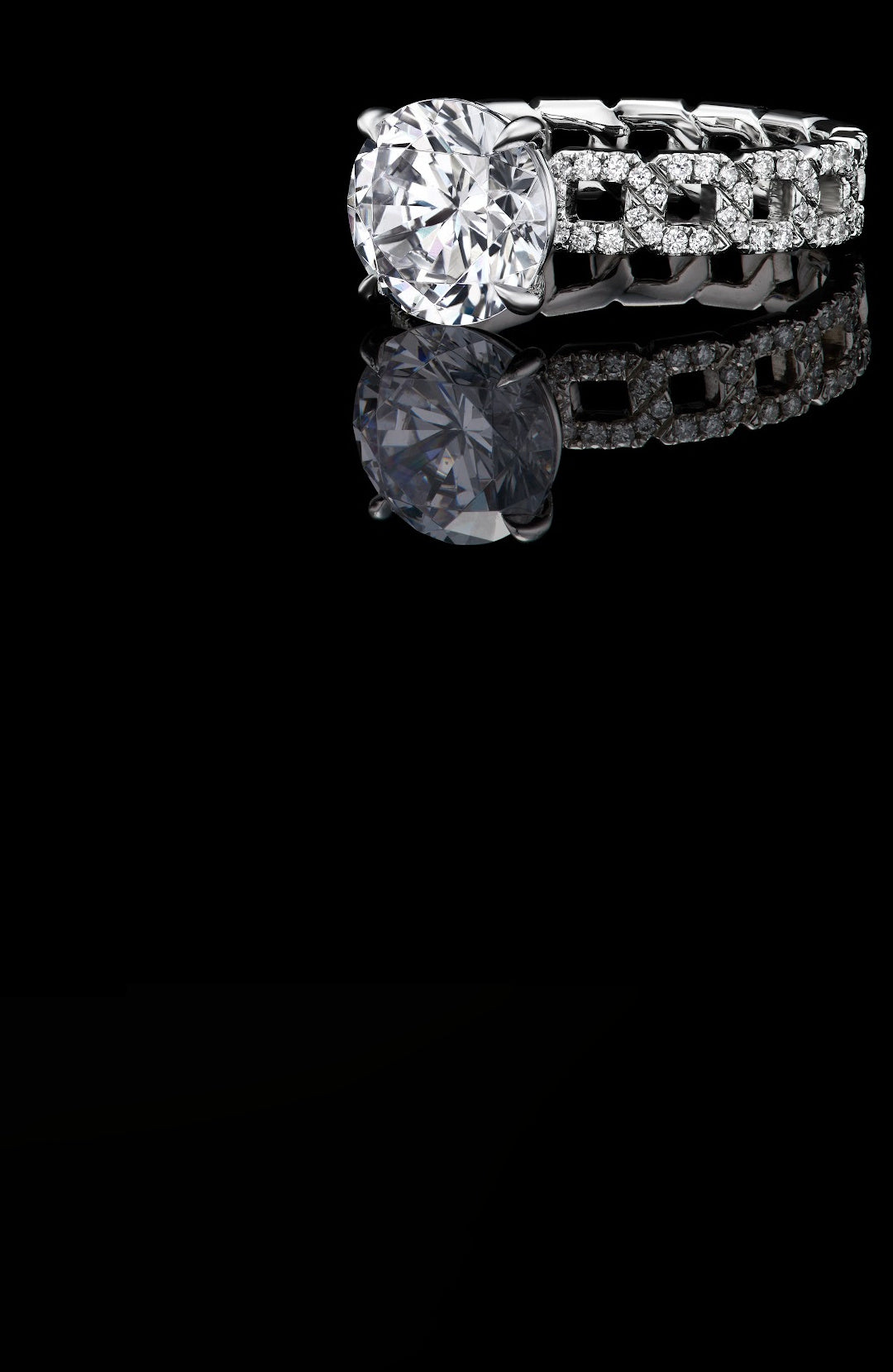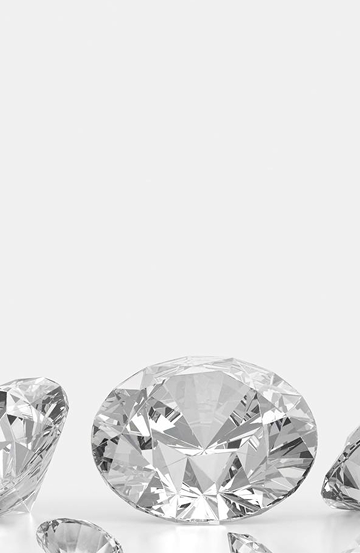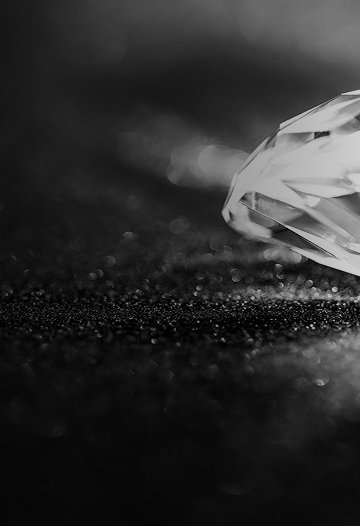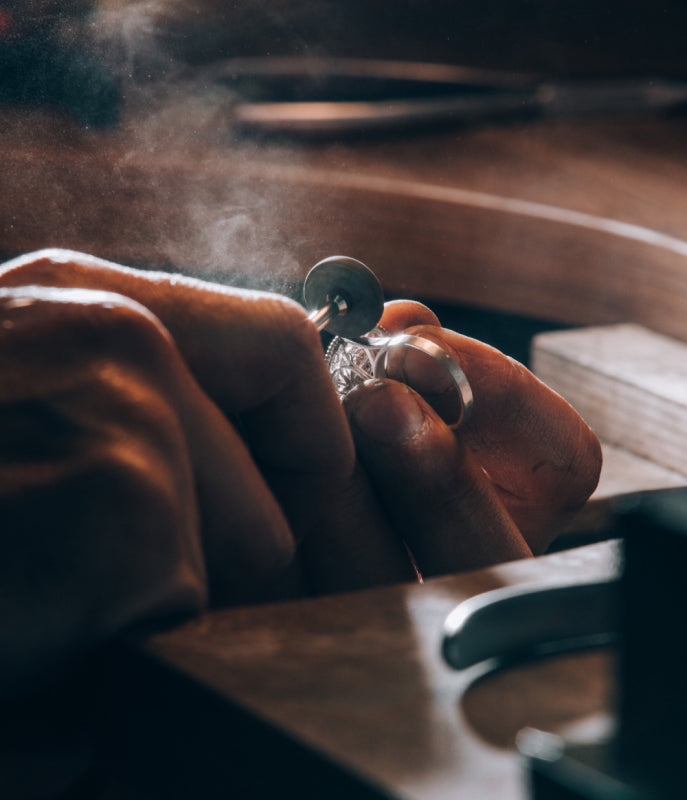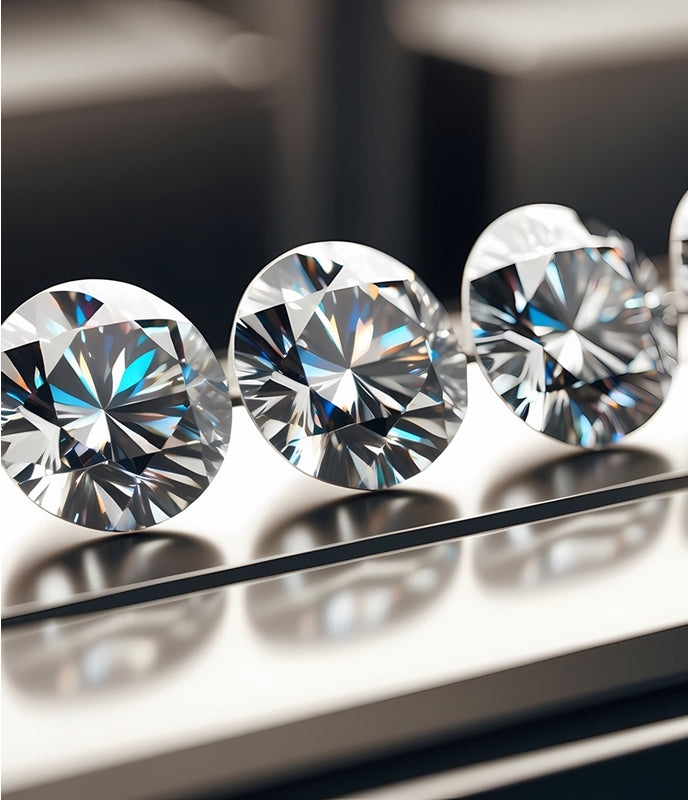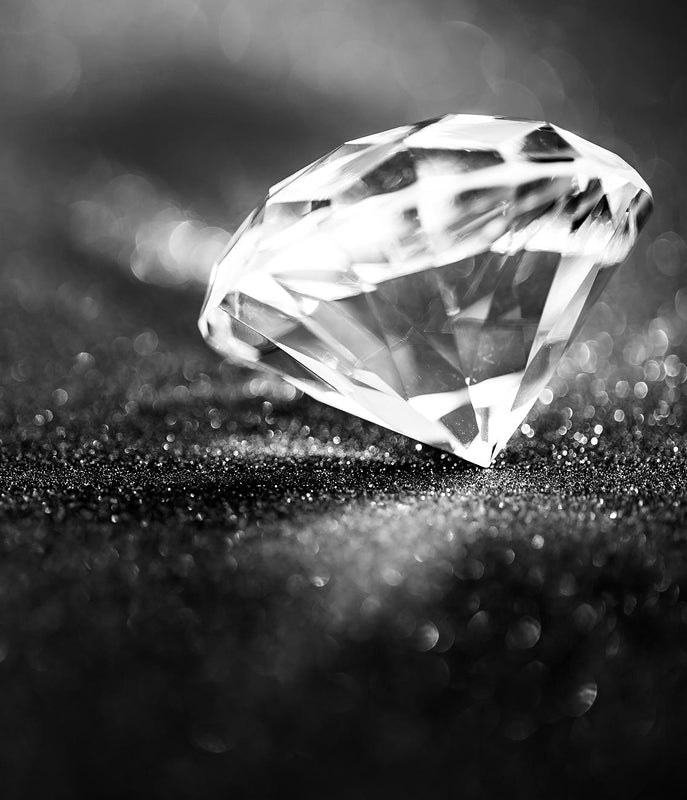DIAMOND COLOR: LESS IS MORE
Diamond color grades tend to be a more straight forward specification to grade, although the faceting patterns of different cuts can have an impact on how the diamond reflects color. Step cuts, like emerald and Asscher hide color a little better than brilliant cuts, like round and oval. At Lindsey Scoggins Studio, we offer diamonds graded D, E, F, G, and sometimes H if we feel the diamond properly reflects light. We also avoid any fluorescence. Fluorescence is the glow that some diamonds emit under different lighting conditions like UV. Fluorescence can appear blue and potentially hazy.
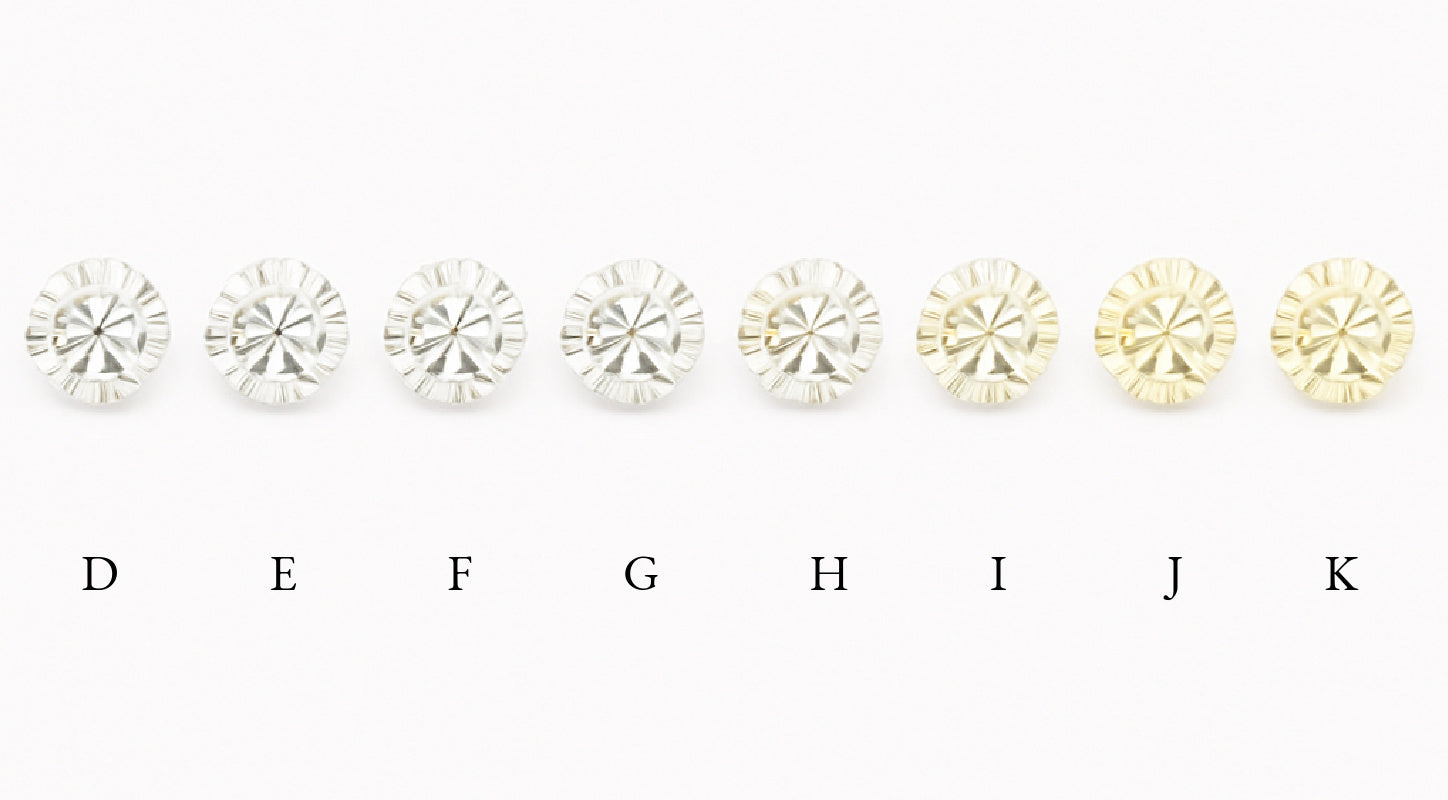
CHOOSING YOUR IDEAL COLOR GRADE
Choosing the perfect diamond isn’t just about the highest grade—it’s about selecting the one that’s right for you. Many clients find that G or H color diamonds offer an ideal balance of beauty, quality, and value—appearing colorless while offering significant savings compared to higher diamond color grades. If you're designing a custom engagement ring or exploring our collections, we'll guide you through your diamond selection to ensure your stone looks luminous in its final design.
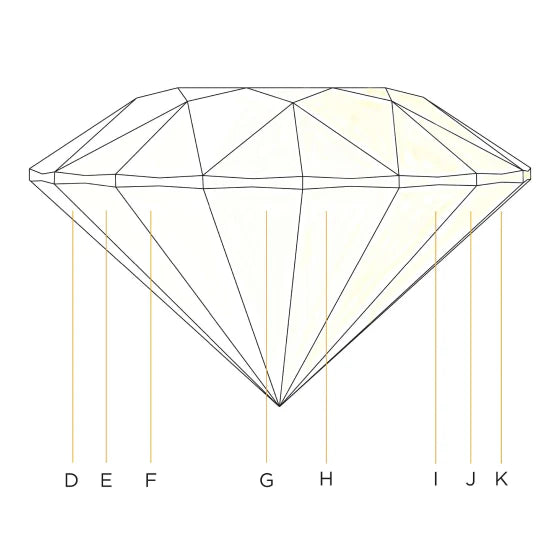
Grading System
Unlike white diamonds, which are graded on the absence of color, fancy colored diamonds are graded based on the presence, intensity, and evenness of their color. The Gemological Institute of America (GIA) uses a specialized scale for fancy colors. Fancy color grades range from Faint, Very Light, and Light, up to Fancy, Fancy Intense, Fancy Vivid, and Fancy Deep. For example, a Fancy Vivid Pink diamond is extremely rare and prized for its rich, saturated color. Unlike white diamonds, where higher grades can sometimes look similar, fancy colored diamonds become more desirable—and significantly more valuable—as their color becomes more intense.

A Range of Colors
Fancy colored diamonds are available in a wide range of colors including everything from yellows and browns to pinks, blues and greens ranging in vibrancy and depth.

Rarity
Fancy colored diamonds represent less than 0.1% of all diamonds mined, making them exceptionally rare. Among them, some colors are rarer and more valuable than others. Red diamonds are the rarest of all and often command record-breaking prices. Blue diamonds, like the famous Hope Diamond, are incredibly scarce and highly collectible. Pink diamonds, especially after the closure of Australia’s Argyle mine, have surged in demand and are now considered investment-grade gems. Green, violet and orange diamonds are also rare, especially in vivid saturation. Yellow diamonds (often referred to as “canary diamonds”) are more available, but rich Fancy Vivid yellow stones are still highly sought-after.

Do you have questions?
What is the best diamond color grade?
What is the best diamond color grade?
D is the highest grade, but diamonds in the D–F (colorless) and G–H (near-colorless) range offer beautiful options depending on your setting and preference.
How does diamond color impact diamond price?
How does diamond color impact diamond price?
Higher color grades are rarer and more expensive. A small drop in grade can offer significant savings with little visible difference.
Can you see the difference between diamond colors?
Can you see the difference between diamond colors?
In most cases, differences between color grades—especially D to G—are subtle and hard to detect without magnification. In a well-designed setting, even trained eyes may not notice the difference. The larger the diamond or the more transparent the cut (like emerald or Asscher), the more visible color can become.
How do I contact your team with additional questions?
How do I contact your team with additional questions?
We’re here to help. You can contact our team directly by email at inquiry@lindseyscoggins.com or call or text us at 917-409-7123. You can also schedule a consultation through our website to discuss a custom design, diamond selection, or any questions about the process.
The 4Cs
Curation
Learn more about our diamond curation process and additional factors that we consider when selecting a diamond.
Cut
Diamond cut refers to how well a diamond has been shaped and faceted from its rough form. The only specification made by human hands.
carat
Carat is a diamond’s weight and the system used to measure diamonds. Bigger isn’t always better, cut and setting also affect how large it looks.
Clarity
Clarity refers to the tiny natural marks called inclusions that are inside a diamond. Stones that look flawless to the eye are the most rare.


